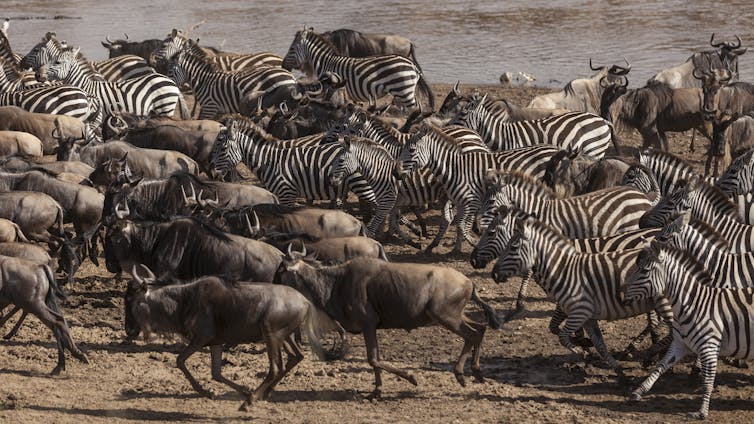Climate research is critical in Africa: how to make it more visible
- Jennifer Fitchett
The threats of climate change to plants, animals and people in Africa mean that the continent is an excellent place for biometeorological research.
You don’t need to be a scientist to know what good weather feels like. But there’s a scientific discipline which studies the effect of weather and climate on natural systems. Biometeorology is the study of the role of climate on plants, animals and humans. This includes the impact of day to day weather and long term climate.
Specific fields of study include the role of weather and climate on phenology in plants and animals, plant productivity and domestic animal health and performance. Phenology is the timing of biological events that occur every year, like blossoming, fruit development and leaf colouration.
In human populations, the field of study includes analyses of thermal comfort and stress, the spread of climate-sensitive disease and the impact of climate on tourism.
The discipline was formalised in the 1950s with the establishment of the International Society of Biometeorology and its flagship journal the International Journal of Biometeorology.
Biometeorological research is particularly important in Africa. The continent is projected to experience temperature increases bigger than the global mean throughout the 21st century. Changes in rainfall distribution are projected to heighten the occurrence and severity of droughts, floods and extreme climate events.
The Cape Town “Day Zero” drought, driven by a displacement of moisture corridors, was one such extreme drought. Cyclone Idai, which hit southern Africa in 2019, is one of the best examples of extreme flood events. These are projected to become more common as tropical cyclones intensify.
The continent already experiences climate-sensitive diseases which present challenges to health systems. They include malaria, cholera, ebola, dengue and yellow fever.
Agriculture – both subsistence and commercial – is of great importance across the continent. And in many countries, climate-sensitive tourism sectors are becoming an important part of the economy.
The threats of climate change to plants, animals and people in Africa mean that the continent is an excellent place for biometeorological research. It also means that the findings of research are of critical importance in informing some of the most important policies.

But the continent is still not well represented in academic output in this field. I conducted a review and found that research in or about African countries makes up only 3.4% of the 4,014 papers in the International Journal of Biometeorology.
Topics of African biometeorology have been included in the journal since the first issue in 1957. The number of these papers has increased since 2011. But the overall number of papers increased at the same time, so the proportion of African papers hasn’t changed very much.
The majority of papers that have been published from the African continent are on topics of animal biometeorology. These include, for example, analyses of heat stress in hens, body temperatures of donkeys and the effects of melatonin on broiler chickens.
The African country with the biggest share of the papers is Nigeria. Again, the topics are mostly about animals. Some papers are on topics such as phenology and conditions for malaria transmission.
Other countries where 15 or more biometeorological studies have been conducted are Algeria, Morocco, Ghana and South Africa.
Making up less than half the number of studies are topics like human thermal comfort and stress, human health, phenology, and plant productivity and stress.
In terms of authorship, 66% of these papers are by at least one researcher based in an African country. But only 15 African countries are included in this authorship.
How to increase African authorship
It’s possible that one reason African research is not well represented in the journal is that academics and their students aren’t aware of the subdiscipline, society or journal. The International Society of Biometeorology has been working to address this through including regional councillors in their executive. This could also be addressed in a number of ways. These include inviting more African researchers to serve as reviewers for the journal, organising African themes for the society symposiums and putting together special African issues in the journal. Each of these require engagement from and involvement of African researchers in this field.
Another key in promoting biometeorology is education at university level. The Students and New Professionals Group of the International Society of Biometeorology has been involved in developing educational content. Only one country in Africa (Uganda) currently has a biometeorology course. A handful of countries include biometeorology topics in broader courses on climate or the environment, and a small group of researchers are supervising students in these topics.
Over time a combination of these efforts will hopefully give the African continent greater representation in biometeorology research. This will improve the capacity to detect, measure and assess the impacts of climate change on natural systems and to develop effective adaptation strategies.![]()
Jennifer Fitchett, Associate Professor of Physical Geography, University of the Witwatersrand. This article is republished from The Conversation under a Creative Commons license. Read the original article.

